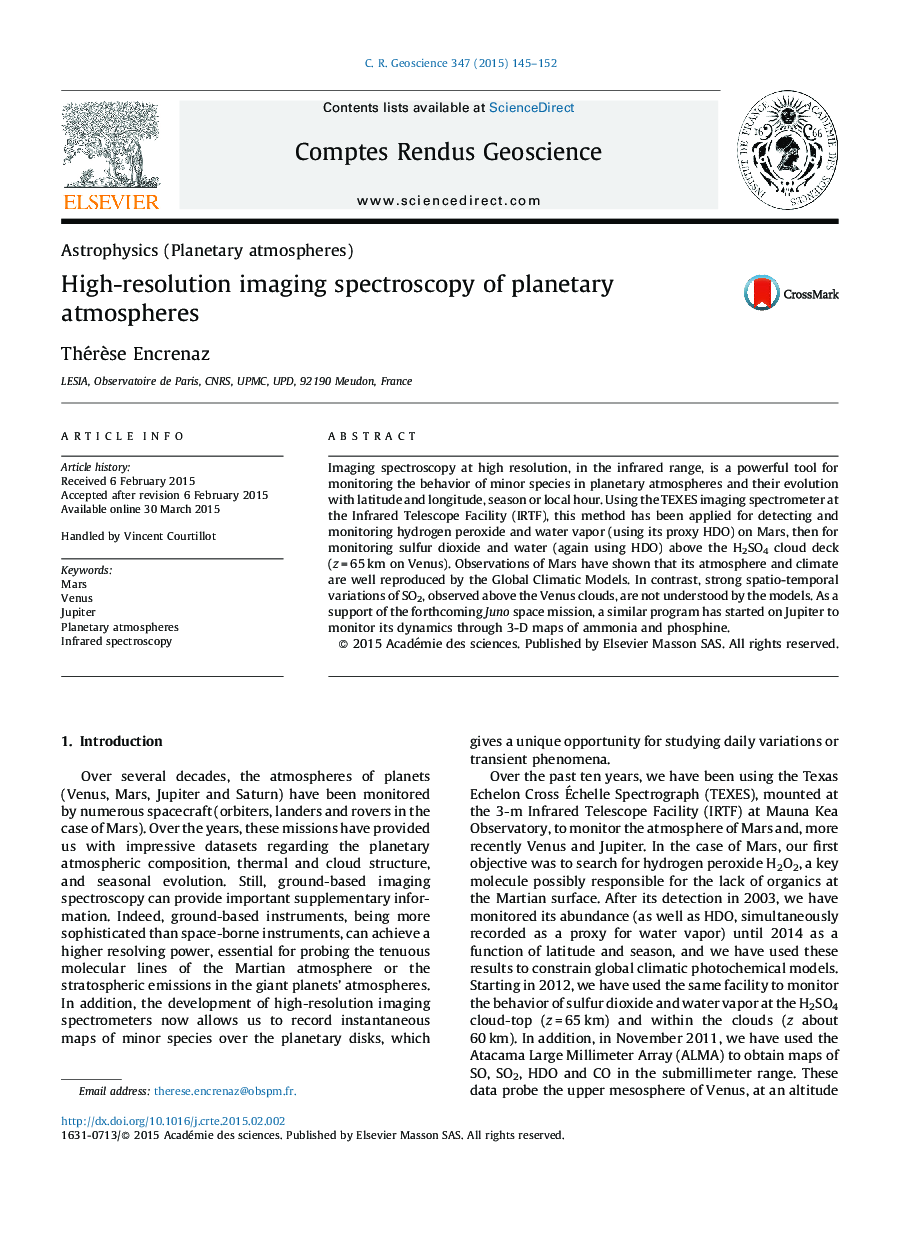| Article ID | Journal | Published Year | Pages | File Type |
|---|---|---|---|---|
| 4462090 | Comptes Rendus Geoscience | 2015 | 8 Pages |
Imaging spectroscopy at high resolution, in the infrared range, is a powerful tool for monitoring the behavior of minor species in planetary atmospheres and their evolution with latitude and longitude, season or local hour. Using the TEXES imaging spectrometer at the Infrared Telescope Facility (IRTF), this method has been applied for detecting and monitoring hydrogen peroxide and water vapor (using its proxy HDO) on Mars, then for monitoring sulfur dioxide and water (again using HDO) above the H2SO4 cloud deck (z = 65 km on Venus). Observations of Mars have shown that its atmosphere and climate are well reproduced by the Global Climatic Models. In contrast, strong spatio-temporal variations of SO2, observed above the Venus clouds, are not understood by the models. As a support of the forthcoming Juno space mission, a similar program has started on Jupiter to monitor its dynamics through 3-D maps of ammonia and phosphine.
